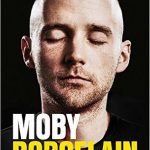Source: What Google Learned From Its Quest to Build the Perfect Team
This is an interesting article full of great insights in what makes a ‘team’ successful. Below, I’ve extracted some of the points of the article to help you digest the message quickly. I always recommend reading the article yourself, and these are the points I took away – feel free to comment 🙂
- “What interested the researchers most, however, was that teams that did well on one assignment usually did well on all the others. Conversely, teams that failed at one thing seemed to fail at everything. The researchers eventually concluded that what distinguished the ‘‘good’’ teams from the dysfunctional groups was how teammates treated one another.”
- “…two behaviors that all the good teams generally shared. First, members spoke in roughly the same proportion ….by the end of the day, everyone had spoken roughly the same amount. ‘‘As long as everyone got a chance to talk, the team did well,’’ Woolley said. ‘‘But if only one person or a small group spoke all the time, the collective intelligence declined.’’ Second, the good teams all had high ‘‘average social sensitivity’’ — a fancy way of saying they were skilled at intuiting how others felt based on their tone of voice, their expressions and other nonverbal cues.
- Psychological safety is ‘‘a sense of confidence that the team will not embarrass, reject or punish someone for speaking up,’’ …. The behaviors that create psychological safety — conversational turn-taking and empathy — are part of the same unwritten rules we often turn to, as individuals, when we need to establish a bond. And those human bonds matter as much at work as anywhere else. In fact, they sometimes matter more.
- Google’s data indicated that psychological safety, more than anything else, was critical to making a team work.
- “No one wants to leave part of their personality and inner life at home. But to be fully present at work, to feel ‘‘psychologically safe,’’ we must know that we can be free enough, sometimes, to share the things that scare us without fear of recriminations. We must be able to talk about what is messy or sad, to have hard conversations with colleagues who are driving us crazy.”
I’ve often wondered why some teams/groups seem to be more successful than others in achieving a certain goal or completing a task where the members are still friendly and jovial with each other, rather than resentful or spiteful. I can recall a few instances from my previous job roles where the above information would have been helpful!
 I’m currently reading
I’m currently reading